Nettoyer un cercle à broder est un élément essentiel de l'entretien de votre machine à broder. Cela ne semble peut-être pas être la tâche la plus glamour, mais fais-moi confiance, it’;ça vaut le coup à long terme.
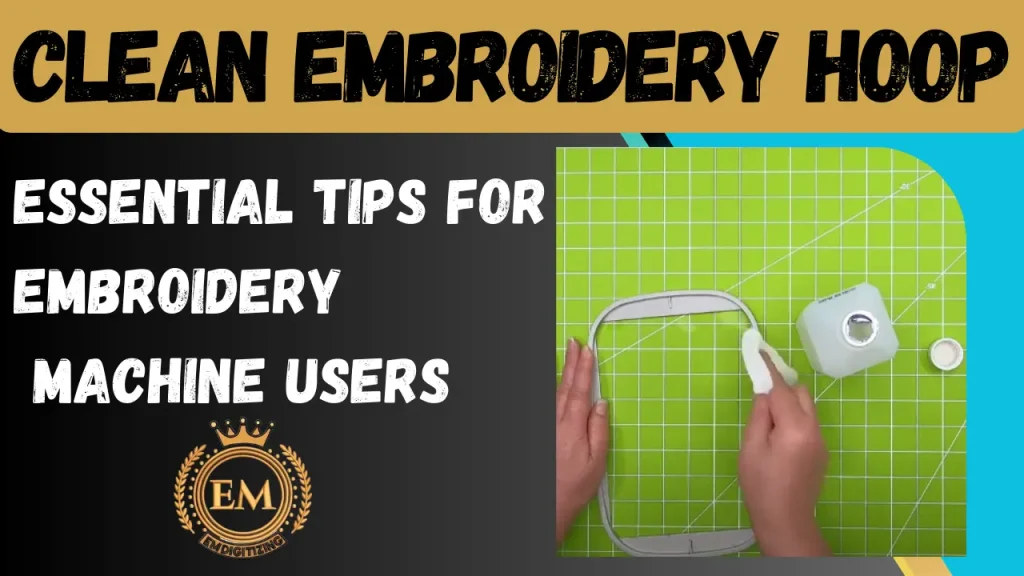
Dans cet article, we’;Nous découvrirons pourquoi il est important de nettoyer le cercle et les avantages d'un cercle de broderie propre régulièrement..
Cercle à broder propre: Conseils essentiels pour les utilisateurs de machines à broder
Pourquoi est-il important de nettoyer le cercle à broder?
Un cercle à broder propre est important car, au fil du temps, il peut accumuler de la poussière, peluche, et même des résidus de stabilisateurs et tissus. Cette accumulation peut affecter les performances de votre machine et le qualité de votre broderie.
Plus, un cercle sale peut transférer de la saleté sur votre tissu, créer un désordre indésirable sur vos magnifiques créations.
Avantages d’un nettoyage régulier
Nettoyer régulièrement les cerceaux a ses avantages. Non seulement cela permettra à votre machine de fonctionner correctement, mais cela aidera également à maintenir l'intégrité de vos projets.
You’;Vous éviterez les taches ou les imperfections indésirables causées par un cerceau sale et veillerez à ce que chaque motif soit impeccable..
Plus, un cercle de broderie transparent facilite l'encerclage uniforme de votre tissu, vous donnant de meilleurs résultats de broderie.
Alors$£€¥789/456*123-0.=+_çàiopjkln,;:! ذ ضِ ئ, let’;Entrez dans le vif du sujet sur la façon de nettoyer les cercles à broder.!
Comprendre les différents composants d'un cercle à broder
Pour nettoyer efficacement le cercle à broder, il faut d'abord connaître ses différents composants. Don’;ne t'inquiète pas; it’;ce n'est pas sorcier! Voici les principales parties que vous devriez connaître:
Cadre de cerceau
Le cadre du cerceau est l'anneau extérieur qui maintient le tout ensemble.. It’;est généralement fabriqué en plastique ou en métal et est disponible en différentes tailles pour s'adapter tissu différent tailles.
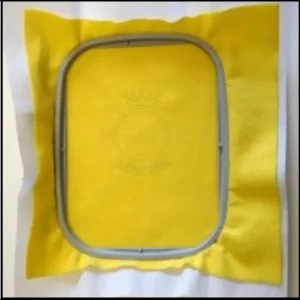
Vis de cerceau
La vis du cerceau, comme le nom le suggère, est la vis qui serre le cadre du cerceau, maintenir le tissu et l'entoilage en place.
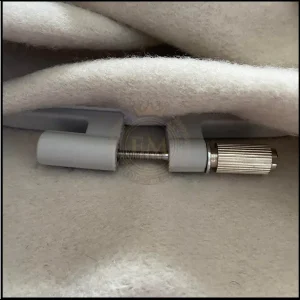
Cerceau intérieur
Le cerceau intérieur est le plus petit anneau qui s'insère à l'intérieur du cadre du cerceau. Il est utilisé pour fixer le tissu et l'entoilage, en s'assurant qu'ils restent tendus et dans la bonne position pendant la broderie.
Stabilisateur et tissu
L'entoilage est un matériau de support placé derrière le tissu pour fournir un soutien pendant la broderie.. The fabric is what you’;je vais broder dessus, et il peut varier en épaisseur et en texture.
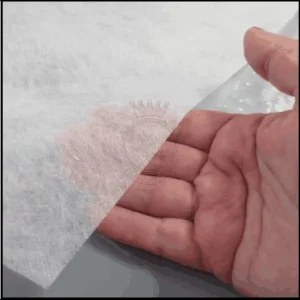
Outils et matériaux nécessaires au nettoyage
Maintenant que tu connais ton cercle à broder à l'envers, let’;Rassemblez les outils et matériaux you’;il va falloir le nettoyer bien:
Chiffon doux ou chiffon en microfibre
Un chiffon doux ou un chiffon en microfibre sera votre choix pour essuyer la poussière et les débris du cadre du cerceau., cerceau intérieur, et vis.
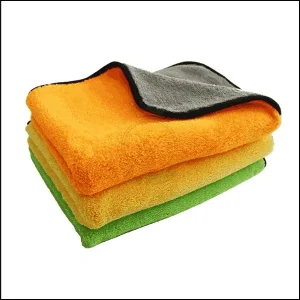
Eau savonneuse douce
L'utilisation d'une solution d'eau savonneuse douce aidera à éliminer tout résidu collant ou tache.. Just be sure to use a gentle soap that won’;Ne pas endommager le cerceau ni laisser de résidus.
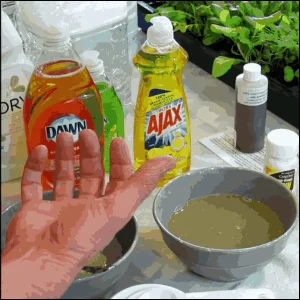
Cotons-tiges
Les cotons-tiges sont pratiques pour atteindre les coins et crevasses étroits qu'un chiffon pourrait ne pas pouvoir atteindre..
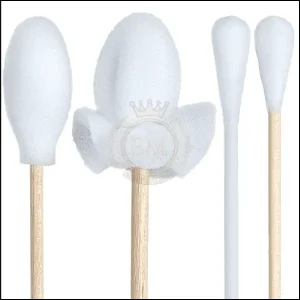
Alcool isopropylique
L'alcool isopropylique est idéal pour désinfecter votre cerceau et éliminer les taches tenaces ou les substances collantes. N'oubliez pas de l'utiliser avec parcimonie et d'éviter de le mettre sur des composants électroniques..
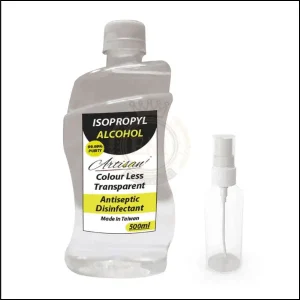
Instructions étape par étape pour nettoyer le cercle de broderie
Maintenant que vous avez tous vos outils de nettoyage prêts, let’;Plongez dans le processus étape par étape pour nettoyer le cercle à broder:
Retrait du tissu et du stabilisateur
Commencez par retirer le tissu et l'entoilage du cerceau. Desserrez soigneusement la vis du cerceau et séparez le cerceau intérieur du cadre., en retirant doucement le tissu et l'entoilage.

Démontage du cercle à broder
Prochain, démontez complètement le cercle à broder en dévissant la vis du cercle et en séparant le cercle intérieur du cadre. Cela vous permettra de nettoyer soigneusement chaque composant.
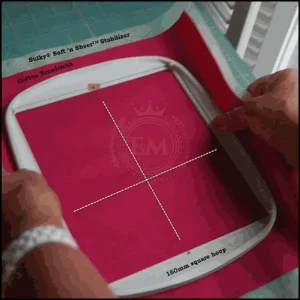
Nettoyage du cadre du cerceau et du cerceau intérieur
Utiliser un chiffon doux ou un chiffon en microfibre, essuyez le cadre du cerceau et le cerceau intérieur pour éliminer toute poussière ou débris.

Pour toute tâche ou résidu sur le cadre, humidifiez le chiffon avec de l'eau savonneuse douce et frottez doucement. Séchez-les soigneusement avant de passer à l'étape suivante.
Nettoyage de la vis du cerceau
Prenez un coton-tige et trempez-le dans de l'alcool isopropylique. Frottez doucement la vis du cerceau pour éliminer toute saleté ou crasse. Assurez-vous de le sécher complètement avant de remonter le cerceau.
Réassembler le cercle à broder
Une fois que tous les composants sont propres et secs, it’;il est temps de tout remettre en place. Insérez le tissu et l'entoilage dans le cercle intérieur, en s'assurant qu'ils sont centrés.
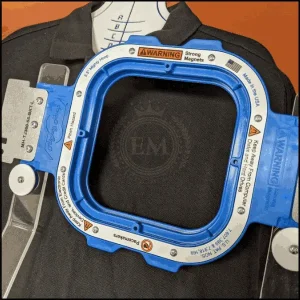
Remettez le cerceau intérieur dans le cadre, aligner les trous. Pour terminer, serrez la vis du cerceau pour maintenir le tout en place et votre cercle de broderie propre est prêt
Conseils et précautions pour un bon entretien
Un bon entretien de fournitures de broderie est indispensable pour prolonger leur durée de vie et assurer une performance optimale dans vos projets.
Éviter les produits chimiques agressifs
Cleaning your embroidery hoop doesn’;Je ne dois pas avoir l'impression qu'une expérience de chimie a mal tourné. Évitez d'utiliser des produits chimiques agressifs qui pourraient endommager le cerceau ou laisser des résidus indésirables.
Utilisez des savons doux ou nettoyez le spray à badigeonner du cercle à broder spécialement conçu pour machines à broder. Rappelles toi, votre cerceau mérite une touche douce, tout comme votre animal préféré.
Manipuler le cerceau avec soin
Traitez votre cercle à broder avec la tendresse qu'il mérite. Évitez de le jeter comme une patate chaude ou de l'utiliser comme frisbee lors des soirées broderie. (unless you’;je cherche un trou en forme de cerceau dans ton mur).
Manipulez le cerceau doucement et évitez d'appliquer une force excessive lors du nettoyage.. Considérez-la comme une fleur délicate qui a besoin de votre touche nourricière..
Ranger correctement le cerceau
When you’;je n'utilise pas le cerceau, donnez-lui un endroit confortable pour se reposer. Conservez-le dans un environnement sec et propre pour empêcher toute humidité ou poussière de s'infiltrer.
Évitez d'empiler des objets lourds dessus, à moins que tu veuilles un cerceau triste et écrasé qui ressemble à une crêpe. Traitez-le comme le précieux trésor qu'il est, et il vous récompensera avec de belles points de broderie.
Dépannage des problèmes courants liés au nettoyage du cercle de broderie
Le nettoyage des cercles à broder est un aspect crucial de l’entretien de la broderie qui peut parfois présenter des défis.
Rouille ou corrosion sur le cerceau
If you’;êtes accueilli par une rouille ou une corrosion disgracieuse sur votre précieux cerceau, don’;je ne panique pas. Prenez un chiffon doux et trempez-le dans un mélange de vinaigre et d'eau. Frottez doucement les zones touchées, et voilà!
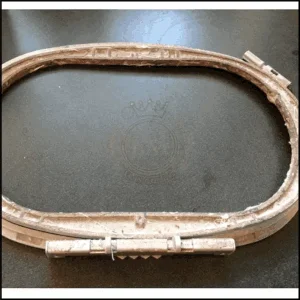
Votre cerceau brillera comme neuf, prêt à se lancer dans une autre aventure de broderie.
Difficulté à éliminer les résidus de tissu
quelquefois, les résidus de tissu peuvent être aussi tenaces qu'un enfant en bas âge qui refuse de manger ses légumes. If you’;j'ai du mal à l'enlever, essayez d'utiliser une brosse à dents ou une brosse à poils doux pour frotter doucement les résidus.
Soyez patient et persévérant, tout comme ta détermination à terminer cette épopée projet de broderie.
Vis du cerceau desserrée ou endommagée
Si la vis de votre cerceau est desserrée ou si vous pensez qu'elle pourrait être endommagée, it’;il est temps pour un peu d'attention. Serrez-le doucement avec un tournevis mais veillez à ne pas trop serrer et à dénuder la vis..
Si la vis est irréparable, don’;ne t'inquiète pas. Vous pouvez facilement trouver des vis de remplacement en ligne ou dans votre magasin de fournitures de broderie local..
Donnez à votre cerceau l'amour qu'il mérite, et il vous récompensera avec des séances de broderie sécurisées et sans tracas.
Conclusion sur le maintien d'un cercle de broderie propre
Cleaning your embroidery hoop doesn’;ça ne doit pas être une tâche ardue. En suivant ces conseils et précautions simples, vous pouvez garder les cerceaux d'une machine à broder propres pendant des années.
Traitez-le avec douceur, éviter les produits chimiques agressifs, et rangez-le correctement comme vous le feriez pour un bien précieux.
Rappelles toi, votre cercle à broder n'est pas seulement un outil mais un compagnon de confiance dans votre voyage créatif. Montre-lui un peu d'amour, et cela vous rendra la pareille avec des points impeccables et de magnifiques chefs-d'œuvre de broderie..
Bonne broderie, mes collègues artisans!
EMnumérisation: Expert en numérisation de broderie à votre service
Si vous êtes intéressé par tout type de projet de broderie, alors EMdigitizing est la meilleure option pour vous. Nous offrons numérisation de broderie et des services d'art vectoriel avec un délai d'exécution rapide. Vous pouvez également visiter et consulter notre site Web ainsi que nos meilleurs services.
Nous offrons également un excellent 50% réduction sur tous nos services pour nos nouveaux clients respectés. Nous avons aussi proposer des devis gratuits généré en seulement 5 minutes.
Vous devriez profiter de cette offre à durée limitée et faire passer votre projet de broderie au niveau supérieur avec EMdigitizing.
Si vous avez des questions concernant ce sujet, tu peux leur demander. Merci d'avoir pris le temps de lire cet article.
Questions fréquemment posées:
Pour supprimer une brûlure sur un cercle à broder, poncez doucement la zone affectée avec du papier de verre à grain fin, puis appliquez une petite quantité de cirage à bois ou d'huile pour lui redonner son aspect..
Pour retirer l'adhésif des cercles à broder, appliquez un solvant comme de l'alcool à friction ou un dissolvant d'adhésif sur un chiffon doux et frottez doucement les zones collantes, puis laver avec du savon doux et de l'eau si nécessaire.
Protégez votre cercle à broder de la poussière en le rangeant dans un endroit propre, endroit sec, de préférence dans un sac en tissu ou une boîte de rangement lorsqu'il n'est pas utilisé, pour le garder propre et prêt pour votre prochain projet.
Après avoir terminé votre broderie dans un cerceau, vous pouvez terminer la pièce en coupant l'excédent de tissu, fixer les bords avec un point courant ou de la colle, et en ajoutant un support pour une présentation soignée ou en l'encadrant pour l'affichage.
